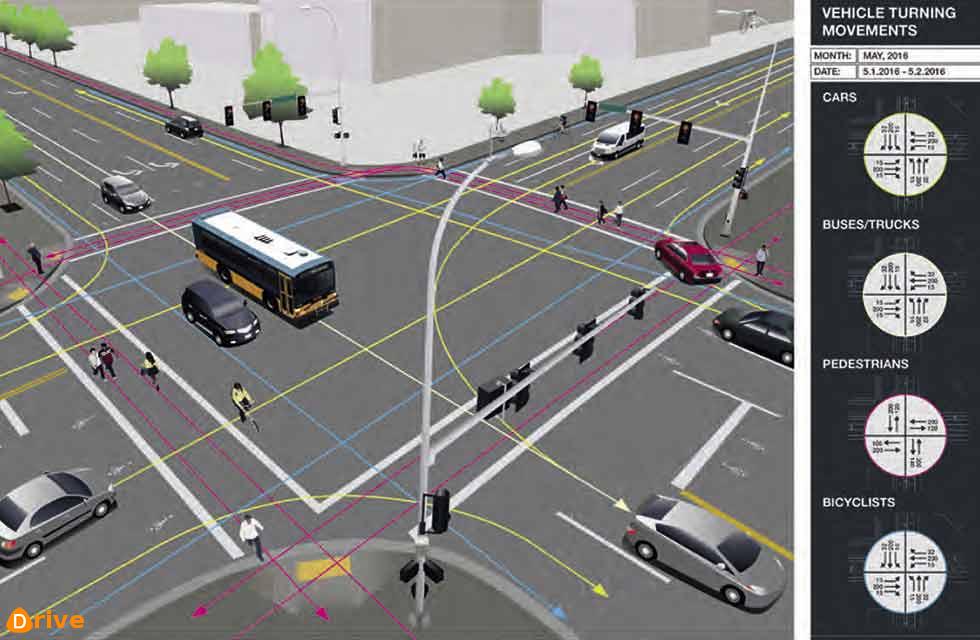The US city of Bellevue is crowdsourcing volunteers to help develop a video analytics system to identify problem areas…
Deep learning
In 2016, there were 433 traffic collisions involving injuries, 39 bicycle crashes and 47 pedestrian collisions, including one fatality, in Bellevue, Washington, USA. The city is collaborating with public and private sector partners to develop a video analytics platform to study crashes and conflicts, so it can decide where to focus infrastructural investment to prevent others from happening.
“We have an opportunity to leverage proven technologies to derive data on speed and derivatives of speed (for example, acceleration and jerk) to better understand steering and braking behaviors,” says Franz Loewenherz, principal transportation planner, City of Bellevue. “This data has the potential to identify near-collision events, such as when a car abruptly stops or swerves to avoid striking a pedestrian. These close calls are much more frequent and more useful than actual crash reports in detecting systemic safety problems.”
Other stakeholders in the Video Analytics Towards Vision Zero Partnership include Microsoft and the University of Washington. “We are demonstrating the capability of vision technologies to detect cars, pedestrians and bikes and track their movements from traffic cameras,” says Loewenherz.
The partnership is now crowdsourcing volunteers to annotate pre-recorded video clips from traffic cameras. “This data will be used to train the underlying deep-learning algorithms informing the video analytics platform,” says Loewenherz. “Through crowdsourcing, we have an opportunity to teach computers to recognize when, where and why traffic crashes occur.”
There are multiple protocols to ensure that only accurately submitted classifiers are incorporated from the crowdsourcing effort. More than 500 volunteers have come forward so far. Loewenherz says their efforts have resulted in pedestrians and bicyclists (grouped into a non-motorized object category) being recognized 90% of the time. Microsoft is targeting +90% segmentation accuracy between the categories.
“We’ve already begun to experience promising results in the form of a traffic analytics dashboard developed by Microsoft, which is operational in the City of Bellevue’s traffic management center,” says Loewenherz. “The dashboard depicts count reporting infographics based on raw video footage from Bellevue’s traffic cameras. The video analytics platform accurately classifies motor vehicles by turning movement (through, left or right) and by direction of approach.”
Loewenherz is excited about the potential of the tool to identify problem areas in need of infrastructural countermeasures. “In addition, it could be leveraged to measure how well roadway investments have improved safety, enabling cities to track their progress toward Vision Zero,” he says. “Our partnership is exciting because no city has ever developed a video analytics platform that converts raw video footage from a city-wide network of traffic cameras into useful data that can be searched, managed and used to provide detailed information on traffic flow and non-crash traffic conflicts. Together we intend to move beyond proof of concept and arrive at a common set of features that meet the needs of modern cities both large and small, in the USA and in other nations.”






